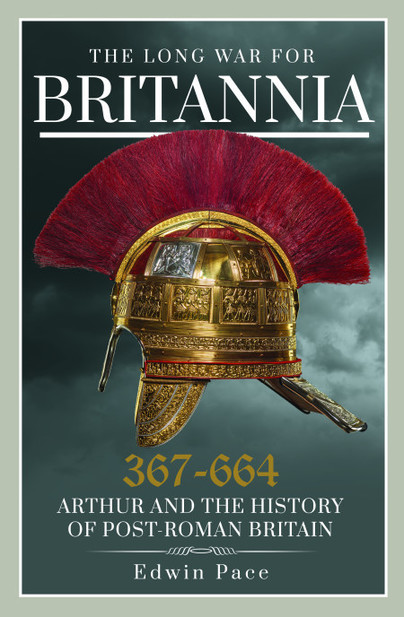The Long War for Britannia
Guest post from author Edwin Pace.
Edwin Pace’s The Long War for Britannia explores one of the least known periods in Britain’s history—and reveals an era that it is the very opposite of the “Dark Ages.” Using the earliest documents, Pace recreates three centuries of conflict, filled with the deeds of dread warlords: Cerdic of Wessex, Edwin of Northumbria, King Oswald—and England’s last, great pagan king: Penda of Mercia. All tried to unite the petty kingdoms of Britain into a single realm. All failed.

Pace, however, shows that each of these rulers was simply trying to recreate the realm of someone who had united Britain into a single kingdom. In the mid-5th century, a British ruler did defeat all the island’s pagan foes. He gave Britons some two decades of peace and prosperity. Indeed, he caught the British imagination so totally that later generations would turn his deeds into the island’s national epic. Fragmentary records call him “the Proud Tyrant,” “the Battle Lord,” and “Most Kingly.”
All later generations remembered him as Arthur.
Based on Pace’s peer-reviewed articles, The Long War for Britannia shows that more of Britain’s early history is directly connected with Arthur than previously believed. There are at least nine separate early accounts chronicling his deeds in some way. Pace also shows that he won a great victory at Badon in 446—which did indeed create an “Arthurian Age,” albeit in no way like the one portrayed in fiction.
Just as in the later fictional accounts, however, Pace demonstrates that the fall of Arthurian Britain was a tragedy brought on by Arthur himself. By mid-century, Britain faced a threat from overseas Saxon, Irish and Pictish sea raiders. Their depredations were every bit as destructive as later Viking invasions. Arthur “solved” this by hiring Angles to guard Britain’s coasts. The logic seemed impeccable: recruit a different barbarian group from Southern Denmark to repel the invaders. We find evidence for their presence in strategic sites like the Isle of Thanet and the Isle of Wight. But Arthur’s gambit failed—and badly. The Angles demanded an ever-growing piece of the pie. This alienated Arthur’s British subjects. Tragically, his next “solution” was far worse. To re-unite the country, he attacked the Goths in Gaul. Sailing his army of 12,000 to the Loire was one of the major military operations of the day.

But the expedition was a disaster. Civil war broke out back in Britain. Upon Arthur’s return, he was slain at the battle of Camlann. And it was his death in this battle that ended any prospect of a united Britain. Attempts in the next centuries to re-create a single kingdom all ended in failure.
Pace’s most important contribution is his complete re-evaluation of all the dating in the earliest chronicles. Long doubted because of apparent inconsistencies, Pace shows that every mistake is the result of logical, but incorrect conclusions by various chroniclers, usually made centuries after the dates were first recorded. And once we realize this, each document confirms every other. We find that Arthur and his era were at the centre of all later British historiography. And, in a multitude of ways, his great but tragic reign became a template for all later rulers of Britain.

The Long War for Britannia, 367-664 is available to order here.

